Abstract
Surveys of workers occupationally exposed to polychlorinated biphenyls (PCBs) in the production of thread or of paint, and of yusho patients were carried out from 1973 to 1982. PCB concentrations in the plasma of the workers ranged from 2 to 521 ppb, and some showed higher PCB levels in the plasma than typical Japanese yusho patients. Gas chromatographic patterns of plasma PCBs of the workers with high PCB levels were shown to match the patterns of the PCBs to which they had been exposed in the workplace. Japanese yusho children showed remarkable decrease with time, but no such decrease was observed in the yusho adults and the workers. Polychlorinated quaterphenyls (PCQs) were detected in the blood of typical Japanese and Taiwanese yusho patients, but PCQ levels in the plasma of the workers were below the detection limit of 0.02 ppb. Clinical findings and subjective complaints of the workers were usually slight compared with typical yusho patients, though some of them had mild dermal manifestations and their PCB levels were suspected to be related to serum triglyceride values. On the basis of these results, we discussed the relationship between the health status of the subjects and their contamination with PCBs or related compounds.
Full text
PDF
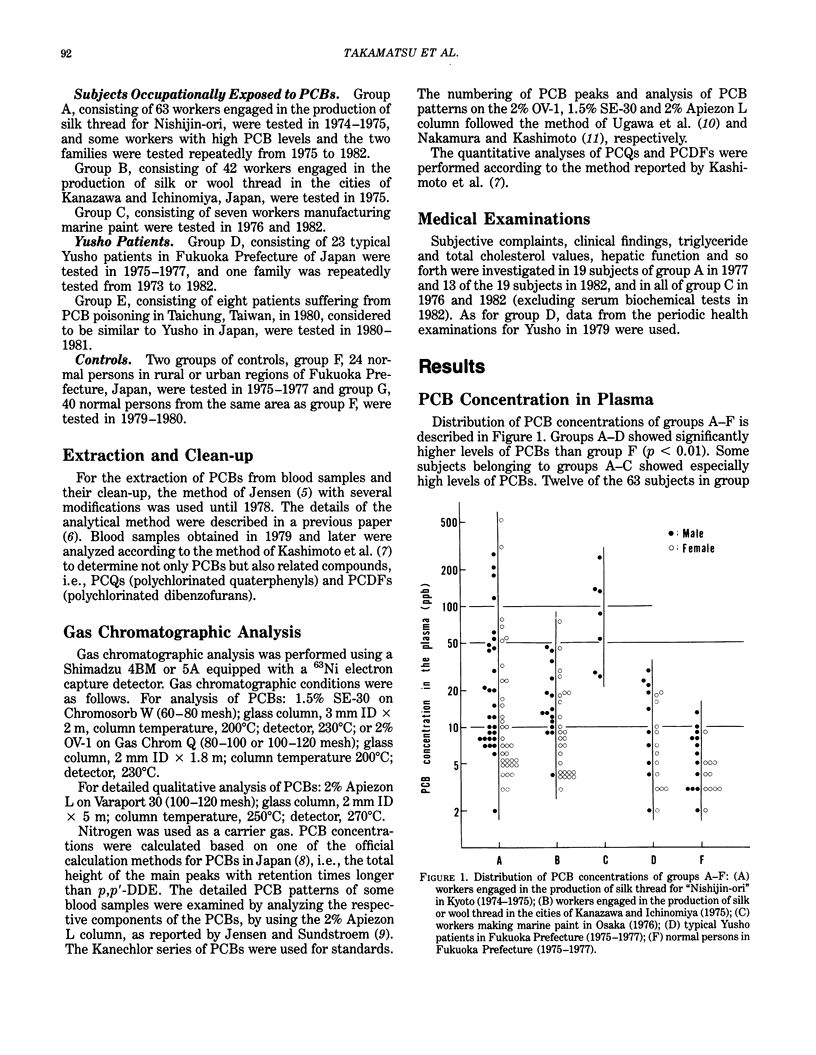
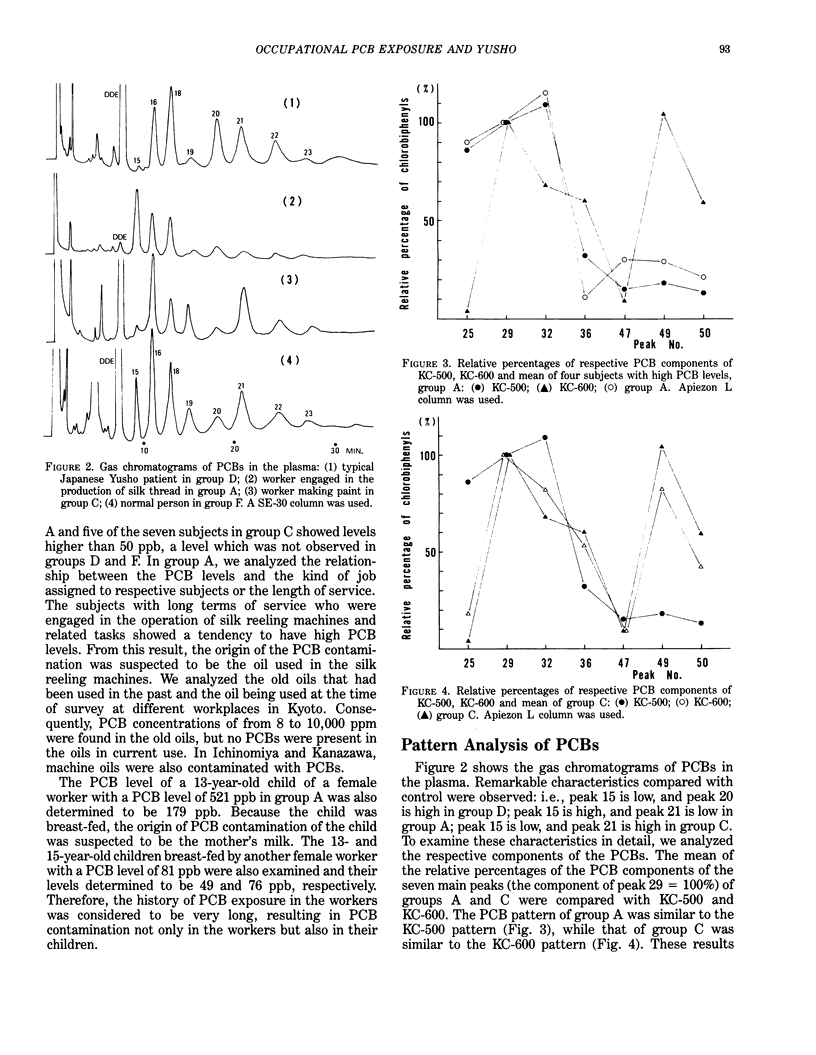
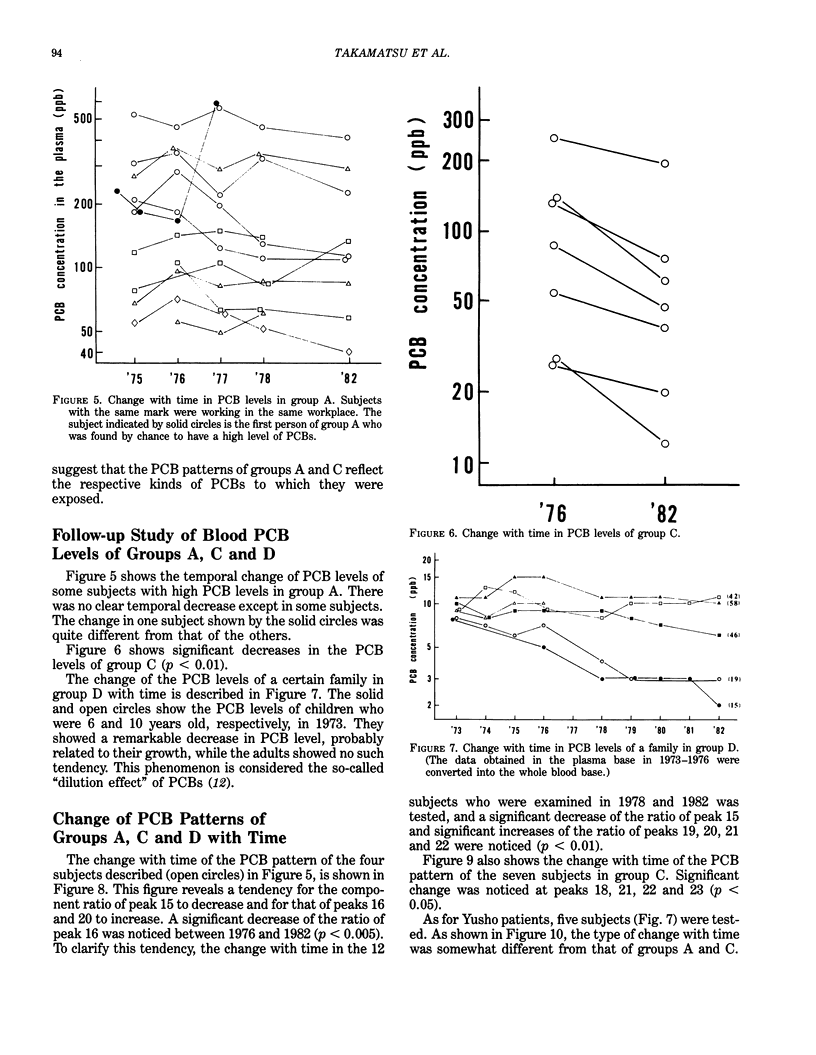
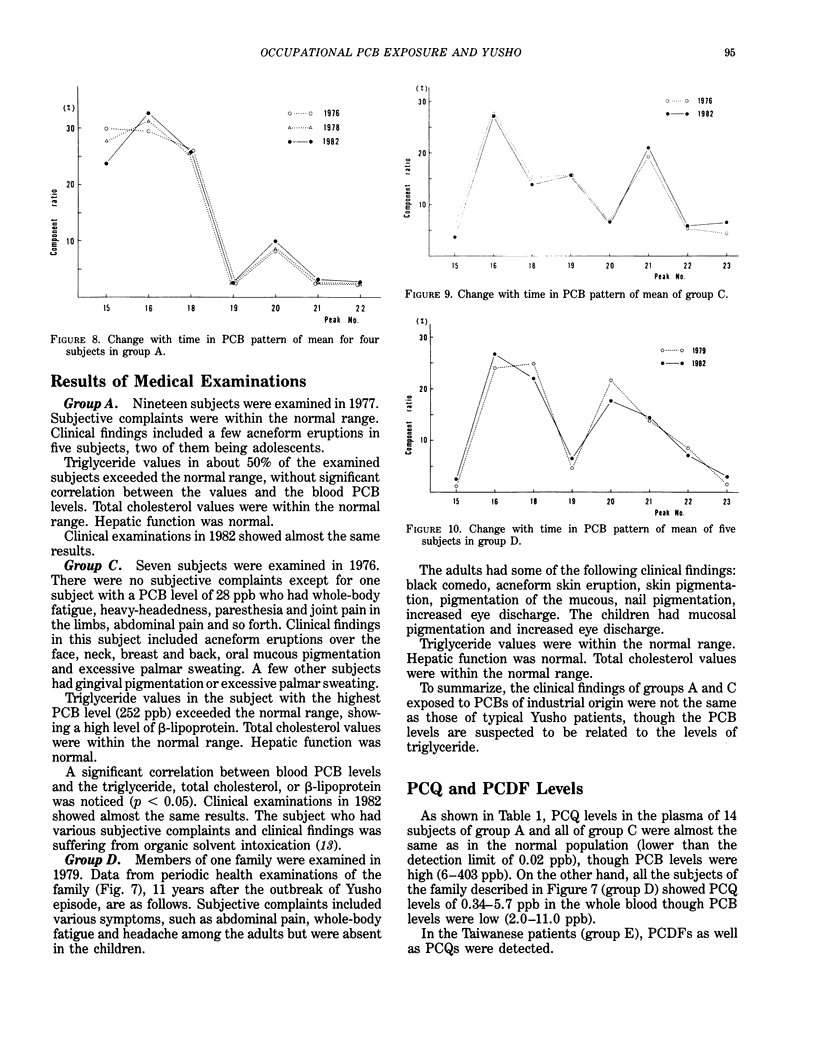
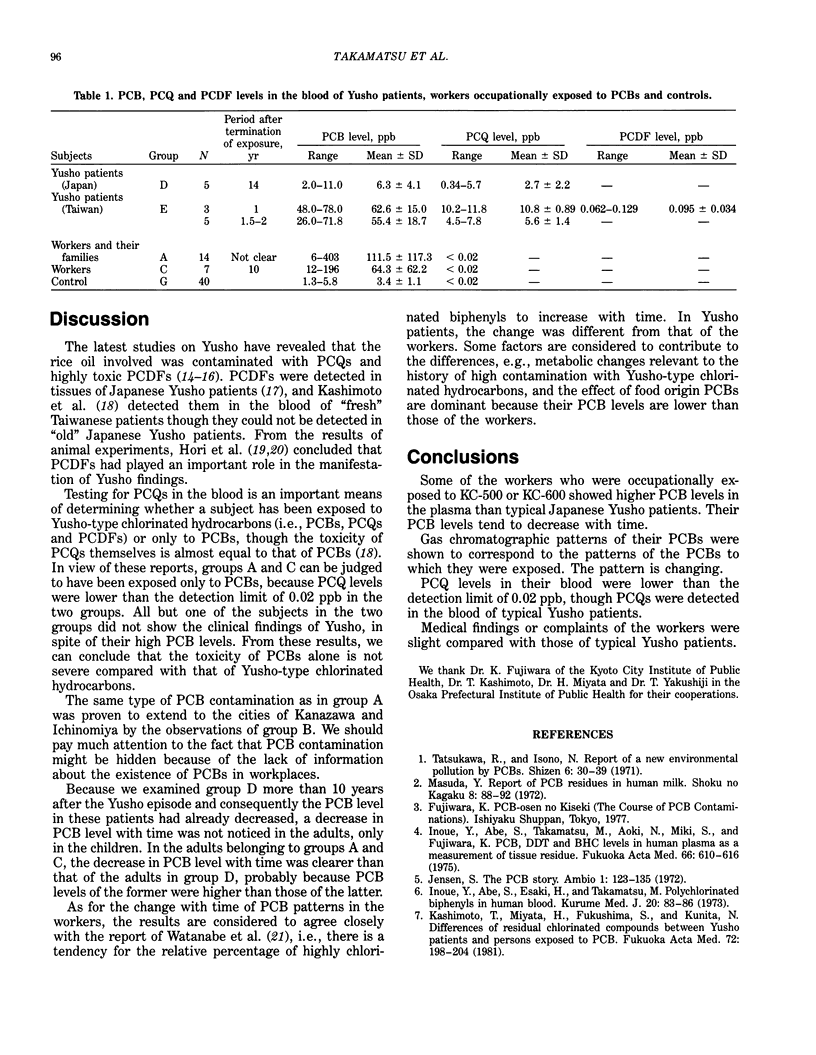

Selected References
These references are in PubMed. This may not be the complete list of references from this article.
- Hori S., Obana H., Kashimoto T., Otake T., Nishimura H., Ikegami N., Kunita N., Uda H. Effect of polychlorinated biphenyls and polychlorinated quaterphenyls in Cynomolgus monkey (Macaca fascicularis). Toxicology. 1982;24(2):123–139. doi: 10.1016/0300-483x(82)90051-8. [DOI] [PubMed] [Google Scholar]
- Inoue Y., Abe S., Takamatsu M., Aoki N., Miki S. [PCB, DDT and BHC levels in human plasma as a measurement of tissue residue (author's transl)]. Fukuoka Igaku Zasshi. 1975 Oct;66(10):610–616. [PubMed] [Google Scholar]
- Kashimoto T., Miyata H., Fukushima S., Kunita N. [Differences of residual chlorinated compounds between yusho patients and persons exposed to PCB (author's transl)]. Fukuoka Igaku Zasshi. 1981 Apr;72(4):198–204. [PubMed] [Google Scholar]
- Kashimoto T., Miyata H., Kunita S., Tung T. C., Hsu S. T., Chang K. J., Tang S. Y., Ohi G., Nakagawa J., Yamamoto S. Role of polychlorinated dibenzofuran in yusho (PCB poisoning). Arch Environ Health. 1981 Nov-Dec;36(6):321–326. doi: 10.1080/00039896.1981.10667645. [DOI] [PubMed] [Google Scholar]
- Masuda Y., Kuratsune M. [Toxic compounds in the rice oil which caused yusho (author's transl)]. Fukuoka Igaku Zasshi. 1979 Apr;70(4):229–237. [PubMed] [Google Scholar]
- Nagayama J., Kuratsune M., Masuda Y. Determination of chlorinated dibenzofurans in kanechlors and "yusho oil". Bull Environ Contam Toxicol. 1976 Jan;15(1):9–13. doi: 10.1007/BF01686189. [DOI] [PubMed] [Google Scholar]
- Nagayama J., Masuda Y., Kuratsune M. Determination of polychlorinated dibenzofurans in tissues of patients with 'yusho'. Food Cosmet Toxicol. 1977 Jun;15(3):195–198. doi: 10.1016/s0015-6264(77)80389-1. [DOI] [PubMed] [Google Scholar]


